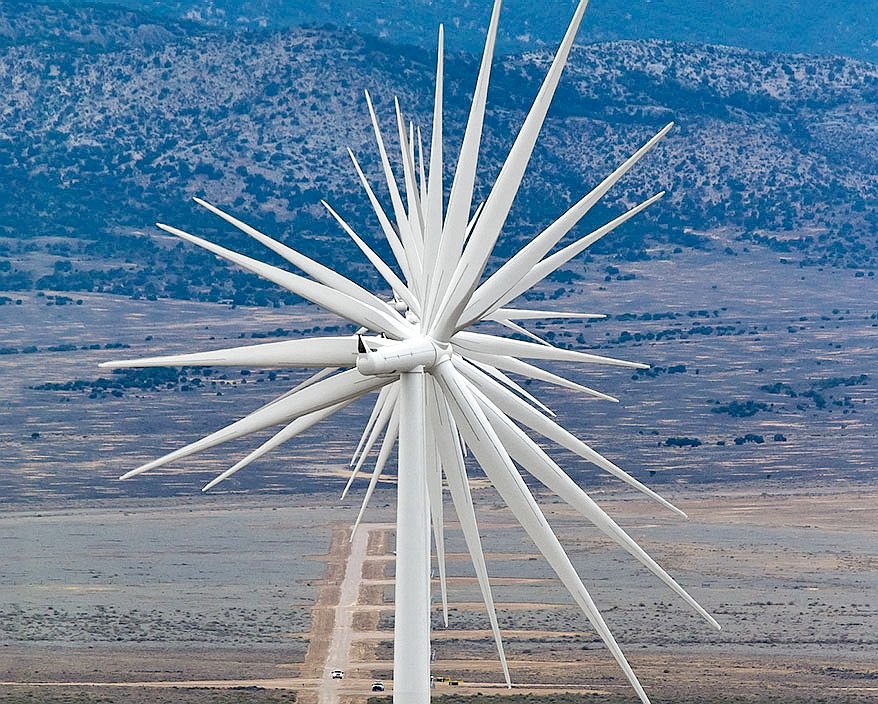Where
the JVH2
is concerned, we'd not be fielding a vessel with wind
turbine generators, where the additional complexity competing with hull
mass, may be a hindrance.
That
does not mean the concept will not be part of an experimental and educational
follow on after the World
Hydrogen Challenge, the Formula
1 of ocean powerboating.
SUSTAINABLE
NAVIGATION In the quest for
zero emission navigation, we are
looking at ways of harnessing wind power more effectively. In the wind turbine business there are basically two types of turbines to choose from, vertical axis wind turbines VAWT and horizontal axis wind turbines
HAWT. Each have advantages and disadvantages. If
we are to improve the efficiency of our mass to thrust ratio, we need to
look at the very latest technology - and adapt it for a marine environment. Having increased ninefold in total capacity since the start of the twenty-first century, wind power is quickly solidifying its position as an important part of the global energy mix. As governments look to reduce dependence on price-volatile
fossil fuels and to cut
carbon
emissions. 
OFFSHORE WIND BIZ April 30,
2021
New research from Oxford Brookes University has found that Vertical Axis Wind Turbines (VAWTs) are far more efficient in large scale (offshore) wind farms than the traditional Horizontal Axis Wind Turbines (HAWTs).
Spinning around an axis vertical to the ground, VAWTs exhibit the opposite behaviour of the traditional horizontal propeller design and increase each other’s performance when arranged in grid formations. When set in pairs, the vertical turbines increase each other’s performance by up to 15 per cent, according to the study. A research team from the School of Engineering, Computing and Mathematics (ECM) at Oxford Brookes led by Professor Iakovos Tzanakis conducted an in-depth study using more than 11,500 hours of computer simulation to show that wind farms can perform more efficiently by substituting the traditional HAWT propeller type for compact VAWTs.
The study is the first to comprehensively analyse many aspects of wind turbine performance, with regards to array angle, direction of rotation, turbine spacing, and number of rotors. It is also the first research to investigate whether the performance improvements hold true for three VAWT turbines set in a series.
“This study evidences that the future of wind farms should be vertical. Vertical axis wind farm turbines can be designed to be much closer together, increasing their efficiency and ultimately lowering the prices of electricity”, Professor Iakovos Tzanakis said. “In the long run, VAWTs can help accelerate the green transition of our energy systems, so that more clean and sustainable energy comes from renewable sources”.
According to lead author of the report and Bachelor of Engineering graduate Joachim Toftegaard Hansen, modern wind farms – while one of the most efficient ways to generate green energy – have one major flaw: a downstream generated turbulence. As the wind approaches the front row of turbines, turbulence will be generated downstream, which is detrimental to the performance of the subsequent rows.
“In other words, the front row will convert about half the kinetic energy of the wind into electricity, whereas for the back row, that number is down to 25-30%. Each turbine costs more than £2 million/MW. As an engineer, it naturally occurred to me that there must be a more cost-effective way”, said Joachim Toftegaard Hansen.
by Adrijana Buljan 
Wind
power as a fuel for producing electricity is inexhaustible, free and always available somewhere on the planet.
The problem is catching it where it is needed.
The power contained in a wind stream is given by:
P = 1/2 D A S3 (1)
P = power, D = air density, A = rotor area, S = wind speed
This leads to the two basic laws of wind energy conversion:
1) The power available from the wind varies as the cube of the wind speed;
2) The capacity of the turbine increases with the square of the surface area (swept area) of the turbine
These laws have led us to think that the only way to approach wind energy conversion into electricity is to build the largest turbines possible and place them in the highest wind speed locations. This is not always correct. The equation can be read as saying that power is proportional to the volume of air times its density times rotor surface area per unit of time:
P = V*D*A/T (2)
P = power, D = density, V = volume, A = swept area, T = time
This implies that optimization is accomplished by processing the largest volume of air per unit of time over the largest rotor surface area. This is where vertical axis wind turbines may shine.
For a conventional HAWT the volume of air interacting with the turbine per unit of time is a thin disk. Each ‘slice’ of air in this disk contacts the turbine blade momentarily and only once. In the case of a VAWT with the same swept area, that disk becomes a tall cylinder whose height is the height of the rotor. This means that for a given rotor swept area the volume of air contact with the rotor surface can be dramatically larger. In the cylinder of rotation of the VAWT, however, the time of interaction between air and rotor stretches through the length of its diameter, and the angle of interaction varies continuously through the cycle, i.e. there is more and longer contact, more opportunity
for energy extraction. In theory.




|








